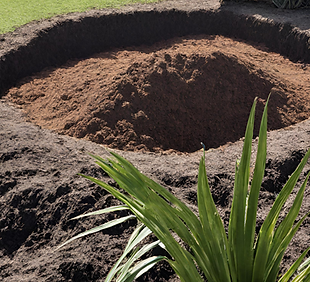Treatment of Breeding Material
Most plant waste and decomposing plant products can be breeding material for CRB as it decays. You can manage CRB populations and reduce the risk of CRB establishment by periodically treating material with one of the lethal treatments listed in the table below. CRB take 4-6 months to develop from an egg to an adult that can fly to new areas. If the plant waste is subjected to a kill treatment every 4 months, the CRB growing in the material will be killed before they have a chance to escape. Additional treatments can slow their development, kill some of the CRB, or make it harder for them to find the material but will not prevent infestation.

To use the table above, reference the type of waste that you have and select appropriate kill and slow treatments. Perform one of the kill treatments every 4 months. An example treatment plan would begin with whole logs and branches being staged for 4 months. Chipping those will kill any CRB but the chipped wood can become infested so you have 4 months to stage the chipped wood before introducing it into a hot composting process. Once the compost cools below 120 F, parts of it are at risk for infestation so the cooled compost can be staged for 4 months then submerged in water for 48 hours to kill all CRB larvae. The water is drained to use as compost tea and used to fertilize crops, the solids are tilled into garden beds before a planting. In this example, the material is staged for over a year but if done properly, does not allow an adult beetle escape to feed on palms or lay eggs in a new site.
TREATMENTS THAT KILL ALL CRB
Treatments that Slow CRB Growth
Organic Mulch Alternatives
There are several alternatives to mulch for water retention and weed control that don't put host palms at increased risk of CRB attack. Inorganic soil coverings will reduce the soil surface evaporation rate and temperature and will last much longer than mulch. Water permeable weed mat, landscaping rock, gravel, rubber chips/pellets, and recycled asphalt gravel are a few common choices. For water retention, products that are incorporated beneath the soil surface work best. Water retention crystals hold much more water than mulch and are not very expensive.











.png)
.png)
.png)
%20(2).jpg)

.png)
